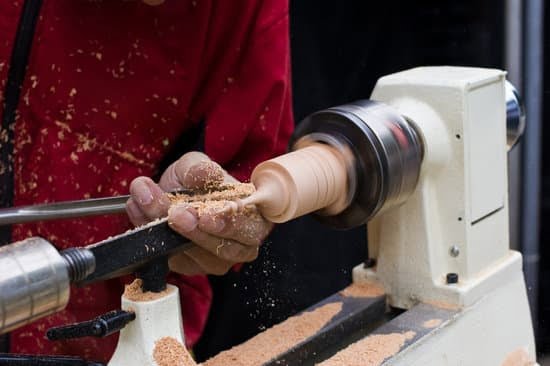Woodworking is a beloved craft that allows artisans to create beautiful and functional pieces. However, one often overlooked aspect of this craft is the potential dangers associated with sawdust. How dangerous is sawdust to woodworkers? This question has become increasingly important as awareness of the health risks of inhaling sawdust continues to grow.
Sawdust is a byproduct of woodworking, created when cutting, sanding, or shaping wood. It consists of fine particles that can easily become airborne and be inhaled. While sawdust may seem harmless, it can pose serious health risks to woodworkers who are consistently exposed to it without proper precautions.
In this article, we will explore the origins of sawdust and its potential health risks. We will also delve into the types of wood that produce the most harmful sawdust and discuss common safety measures for woodworkers to minimize exposure to it. Additionally, we will examine the long-term health effects of breathing in sawdust and provide resources and support for woodworkers dealing with health issues related to sawdust exposure.
The Potential Health Risks of Inhaling Sawdust
Sawdust is a common byproduct of woodworking, created when cutting, sanding, or shaping wood. While it may seem harmless, sawdust can pose serious health risks to woodworkers if proper precautions are not taken to minimize exposure. Particles in sawdust can be extremely fine and lightweight, making them easy to inhale and causing a range of health issues over time.
Inhaling sawdust can lead to respiratory problems, such as asthma, chronic bronchitis, and other lung diseases. The small size of the particles allows them to penetrate deep into the lungs, where they can accumulate and cause inflammation. Additionally, some types of wood contain toxic substances that are released into the air when the wood is cut or sanded, further increasing the health risks associated with sawdust exposure.
Woodworkers should be particularly cautious when working with woods known for producing harmful sawdust, such as oak, walnut, pine, MDF (medium-density fiberboard), and certain tropical hardwoods. These woods produce finer dust particles that can be more easily inhaled and are more likely to cause health issues in the long term.
It is important for woodworkers to understand how dangerous is sawdust to woodworkers and identify which types of wood pose higher health risks in order to take appropriate safety measures.
| Respiratory Problems | Types of Woods |
|---|---|
| Asthma, chronic bronchitis | Oak, walnut |
| Lung diseases | Pine, MDF |
Types of Wood That Produce the Most Harmful Sawdust
Wood dust is a byproduct of working with wood and other related tasks. It consists of tiny particles that are released into the air when cutting, sanding, or shaping wood. When inhaled, these particles could pose a danger to woodworkers’ health. Understanding the different types of wood that produce the most harmful sawdust is essential for woodworkers to minimize their exposure and prioritize safety.
Some species of wood are known to produce more harmful sawdust than others. Woods like oak, walnut, mahogany, and rosewood are considered more hazardous due to their potential to cause respiratory issues and allergic reactions when airborne. These types of wood have been linked to health problems such as asthma, dermatitis, chronic bronchitis, and even cancer when workers are consistently exposed to their sawdust without proper protection.
It is crucial for woodworkers to be aware of the potential risks associated with different types of wood dust and take necessary precautions to reduce exposure. Implementing safety measures such as wearing protective gear, using proper ventilation systems, and utilizing appropriate tools can help minimize the dangers posed by sawdust in the workshop.
| Type of Wood | Potential Health Risks |
|---|---|
| Oak | Asthma, lung irritation |
| Walnut | Dermatitis, nasal cancer |
| Mahogany | Asthma attacks,sinus problems |
| Rosewood | Bronchitis,Carcinogenic effects |
Common Safety Measures for Woodworkers to Minimize Exposure to Sawdust
Woodworkers are often exposed to sawdust, a byproduct of cutting and sanding wood. The inhalation of sawdust can pose potential health risks to woodworkers, leading to respiratory issues and other health problems. To minimize exposure to sawdust, there are several common safety measures that woodworkers can implement in their workshops.
One of the most essential safety measures is the use of personal protective equipment (PPE) such as dust masks or respirators. These devices can effectively filter out the majority of airborne particles, including sawdust, preventing woodworkers from inhaling them. It is important for woodworkers to select PPE that is certified to filter out fine dust particles and fits properly to ensure maximum protection.
In addition to wearing PPE, proper ventilation in the workshop is crucial for reducing the concentration of sawdust in the air. Installing an exhaust system or using fans can help direct the airborne particles away from the breathing zone, minimizing inhalation. Regular cleaning and maintenance of the ventilation system is also important to ensure its effectiveness in controlling sawdust in the workshop environment.
Another common safety measure for minimizing exposure to sawdust is the use of dust collection systems on woodworking equipment such as saws, routers, and sanders. These systems capture sawdust at its source before it becomes airborne, significantly reducing the amount of dust that lingers in the workshop. By implementing these safety measures, woodworkers can protect themselves from potential health risks associated with inhaling sawdust while working with wood.
The Long-Term Health Effects of Breathing in Sawdust
Breathing in sawdust can lead to long-term health effects for woodworkers. Sawdust is created from cutting, sanding, and shaping wood, and it is made up of tiny particles that can easily be inhaled. Over time, this can lead to respiratory issues and other health problems. It’s important for woodworkers to understand the potential risks and take steps to minimize their exposure.
Some of the long-term health effects of breathing in sawdust include:
- Respiratory issues such as coughing, wheezing, and difficulty breathing
- Chronic bronchitis
- Woodworker’s asthma
- Reduced lung function
Woodworkers who regularly work with certain types of wood may be at a higher risk for these health effects. Some woods produce more harmful sawdust than others. For example:
- Oak
- Mahogany
- Walnut
- Cedar
To minimize the risk of long-term health effects from inhaling sawdust, woodworkers should prioritize safety measures and invest in tools and equipment that can help reduce sawdust in the workshop. Implementing good ventilation systems, wearing protective gear such as masks and goggles, and using dust collection systems are all important ways to limit exposure to sawdust.
Overall, understanding the potential long-term health effects of breathing in sawdust is crucial for woodworkers. By taking proactive steps to minimize exposure and prioritize safety, woodworkers can continue enjoying their craft while protecting their health.
Tools and Equipment That Can Help Reduce Sawdust in the Workshop
Woodworkers have a variety of options available to help reduce the amount of sawdust generated in their workshop. By investing in the right tools and equipment, woodworkers can minimize their exposure to sawdust and create a safer working environment for themselves.
Effective Dust Collection Systems
One of the most important tools for reducing sawdust in the workshop is a high-quality dust collection system. These systems are designed to capture sawdust and other airborne particles at the source, preventing them from accumulating in the air or on surfaces. A well-designed dust collection system can greatly improve air quality in the workshop and protect woodworkers from inhaling harmful particles.
Portable Dust Extractors
In addition to a central dust collection system, woodworkers can also benefit from using portable dust extractors. These smaller, more mobile units can be moved around the workspace as needed, providing targeted extraction in specific areas. This is especially useful for handheld power tools such as sanders and routers, which can generate significant amounts of sawdust during use.
Personal Protective Equipment
While not a tool or piece of equipment per se, personal protective equipment (PPE) such as respirators and dust masks play a crucial role in reducing sawdust exposure for woodworkers. Respiratory protection is essential when working with woods that produce particularly harmful sawdust, and wearing a mask can significantly reduce the amount of sawdust particles that are inhaled.
By incorporating these tools and equipment into their workshop setup, woodworkers can effectively reduce the amount of sawdust generated and minimize their exposure to potentially harmful airborne particles.
How to Properly Clean Up and Dispose of Sawdust
As a woodworker, it’s important to not only focus on creating beautiful pieces but also to prioritize safety and health in the workshop. Properly cleaning up and disposing of sawdust is a crucial aspect of maintaining a safe working environment. Sawdust can pose potential health risks when inhaled, so it’s essential to understand the best practices for handling and disposing of it.
Here are some important steps to properly clean up and dispose of sawdust:
- Use a dust collection system: Invest in a high-quality dust collection system for your workshop to effectively capture sawdust at its source before it becomes airborne.
- Sweep and vacuum regularly: Regularly sweep the floors and surfaces of your workshop to remove any accumulated sawdust. Use a vacuum with a HEPA filter to ensure that the fine particles are captured.
- Dispose of sawdust in sealed bags: Once you’ve collected the sawdust, place it in sealed bags to prevent it from becoming airborne again. This will also make it easier to transport and dispose of.
- Proper disposal methods: Check with your local waste management regulations for the proper disposal methods for sawdust. Some areas may allow you to dispose of small quantities with regular household waste, while larger quantities may require special arrangements.
By following these steps, you can minimize the risk of exposure to sawdust in your workshop and contribute to a safer working environment for yourself and others.
Remember, prioritizing safety when working with sawdust is crucial for your long-term health as a woodworker. Taking these proactive measures can help protect you from potential health risks associated with inhaling sawdust particles.
Resources and Support for Woodworkers Dealing With Health Issues Related to Sawdust Exposure
Woodworkers who have been exposed to sawdust and are experiencing health issues as a result may find it helpful to seek out resources and support. It is important for individuals in this situation to understand the potential risks associated with inhaling sawdust and take proactive steps to address any health concerns that may arise. Fortunately, there are resources available to assist woodworkers in managing the effects of sawdust exposure on their health.
One potential resource for woodworkers dealing with health issues related to sawdust exposure is seeking guidance from healthcare professionals. These professionals can provide insight into the specific health risks associated with inhaling sawdust, as well as offer advice on how to manage any symptoms or conditions that may arise. Additionally, healthcare providers can recommend appropriate treatment options and help woodworkers develop a plan for protecting their health moving forward.
In addition to seeking support from healthcare professionals, woodworkers may also benefit from connecting with others who have experienced similar challenges. Online forums, support groups, and other community-based resources can provide a valuable source of information and encouragement for individuals dealing with health issues related to sawdust exposure. By sharing experiences and learning from others, woodworkers can gain insights into effective coping strategies and feel less isolated in their journey to prioritize safety when working with sawdust.
Conclusion and Call to Action for Woodworkers to Prioritize Safety When Working With Sawdust
In conclusion, it is evident that sawdust can pose significant health risks to woodworkers if proper precautions are not taken. The inhalation of sawdust particles can lead to a range of health issues, including respiratory problems and allergic reactions. Furthermore, certain types of wood, such as cedar and oak, produce more harmful sawdust than others, making it crucial for woodworkers to be aware of the potential dangers associated with different wood varieties.
To minimize exposure to sawdust, woodworkers should implement common safety measures in their workshops, such as wearing protective gear like dust masks and using tools and equipment designed to reduce sawdust production. Additionally, it is important for woodworkers to properly clean up and dispose of sawdust to prevent it from accumulating in the workshop environment.
In light of the potential long-term health effects of breathing in sawdust, it is vital for woodworkers to prioritize safety when working with this material. By staying informed about the risks associated with sawdust exposure and taking proactive measures to minimize these risks, woodworkers can protect their health and well-being while pursuing their craft. Ultimately, prioritizing safety when working with sawdust will ensure that woodworkers can continue practicing their passion for years to come without compromising their health.
Frequently Asked Questions
Is It Okay to Inhale a Little Bit of Sawdust?
Inhaling a little bit of sawdust is generally not okay, as it can irritate the respiratory system and cause discomfort. While a small amount may not cause immediate harm, repeated exposure can lead to health issues over time.
How Hazardous Is Sawdust?
Sawdust can be hazardous to health, especially if inhaled regularly or in large quantities. It can cause respiratory issues such as coughing, wheezing, and shortness of breath. In some cases, it may even lead to more serious conditions like asthma and bronchitis.
Is It Bad to Inhale Dust From Sanding?
Inhaling dust from sanding can be bad for your health, as it can contain particles that irritate the lungs and airways. This can lead to respiratory symptoms and long-term health problems if exposure is frequent or prolonged. It’s important to wear proper protective equipment such as a mask when sanding to minimize the risk of inhaling dust.

Hi everyone! I’m a woodworker and blogger, and this is my woodworking blog. In my blog, I share tips and tricks for woodworkers of all skill levels, as well as project ideas that you can try yourself.





